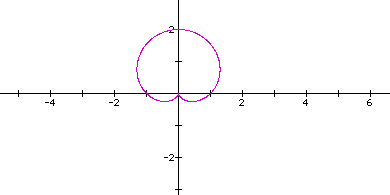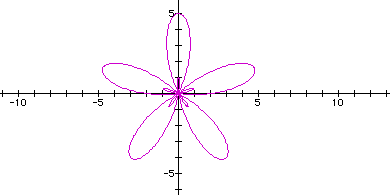Case 5 :
In this case, let's replace cos ( ) with sin ( ). This yields the equation:
Let's first look at the simple case of a=1, b=1, k=1:

This looks like a regular limacon. Let's do another example, where a=2, b=3, k=5:

We have a 5- leaf rose within another 5- leaf rose. This looks very similar to what we noticed on our cosine graphs for a<b. The only difference is that the rose is rotated differently around the axes, much like one would expect. This is common for cos and sin graphs. I assume this will be the case for all cases. Let's do another just to see, with a>b:

As I expected this is similar to the case for cosine, with the exception that it is rotated around the axes.